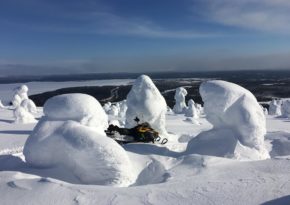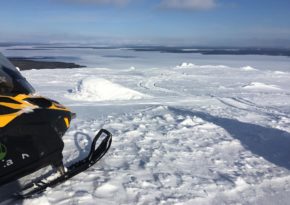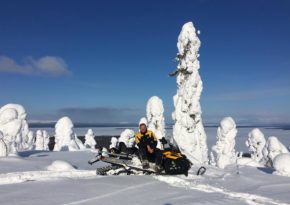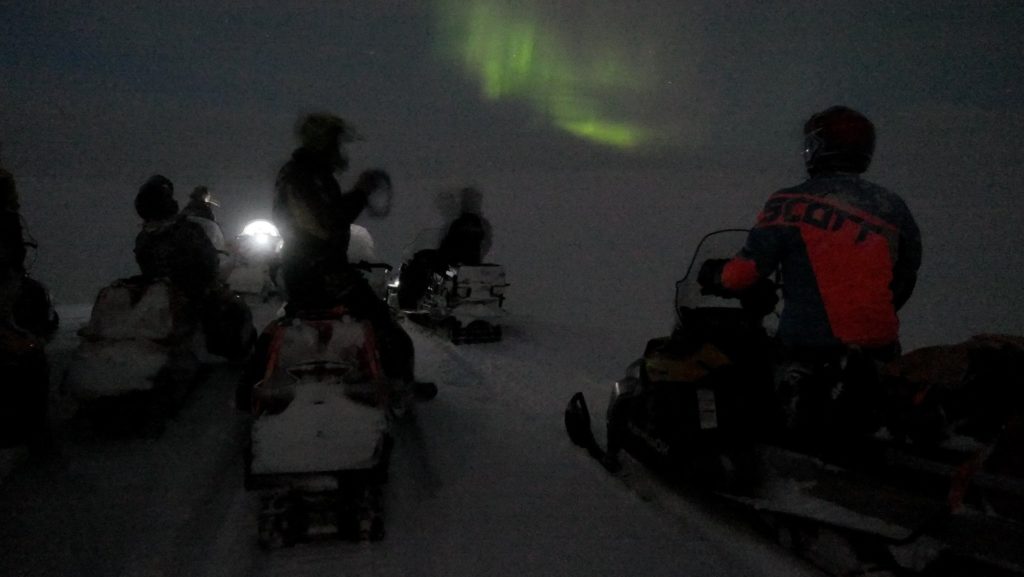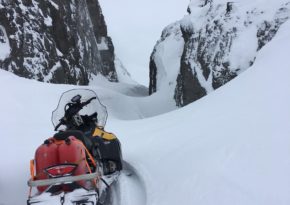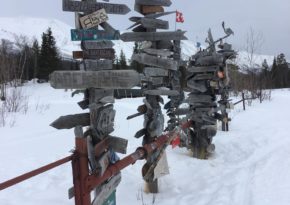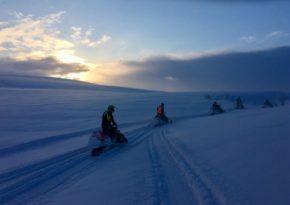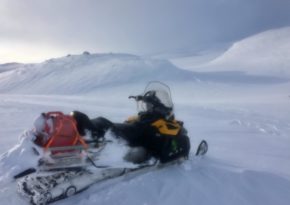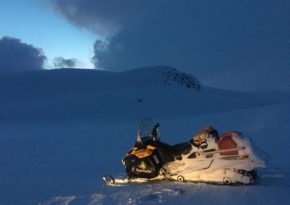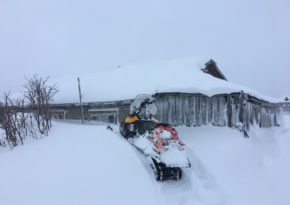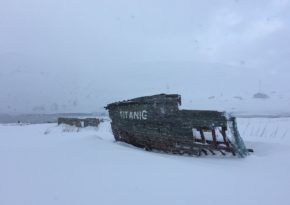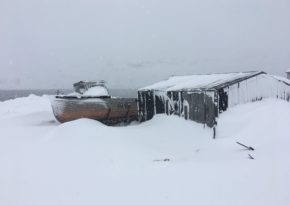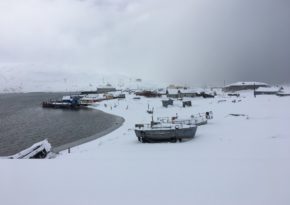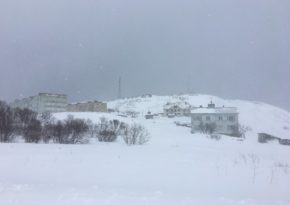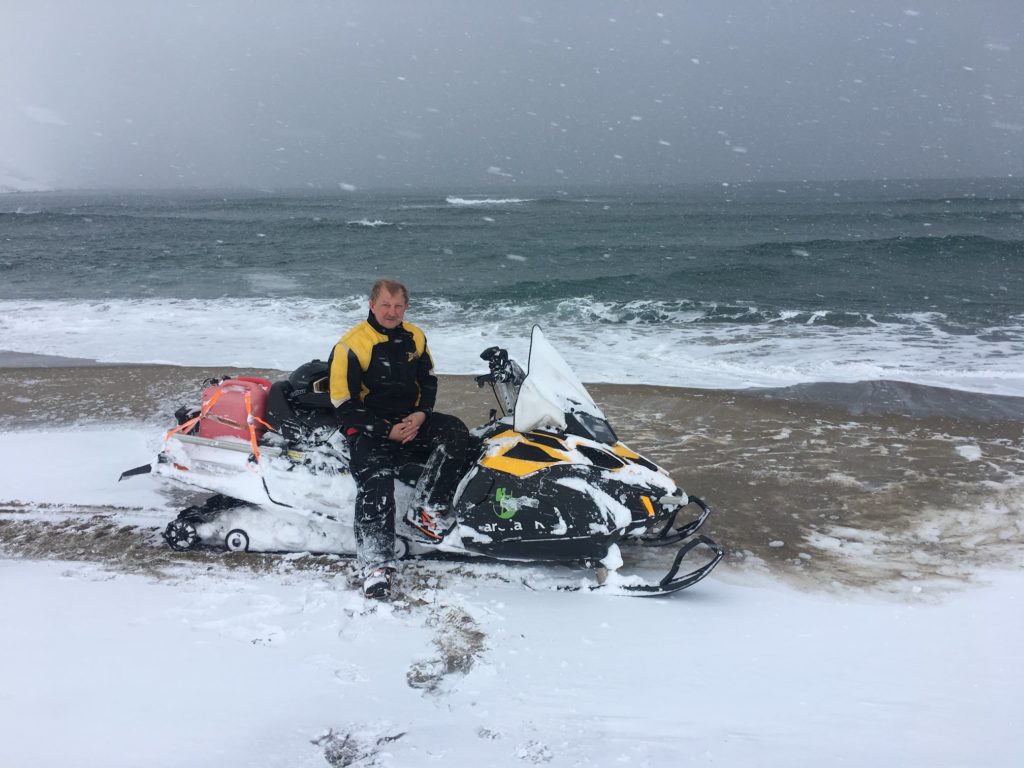A snowmobile expedition to the Arctic Ocean.
This trip to the Arctic goes right after the trip to Africa!
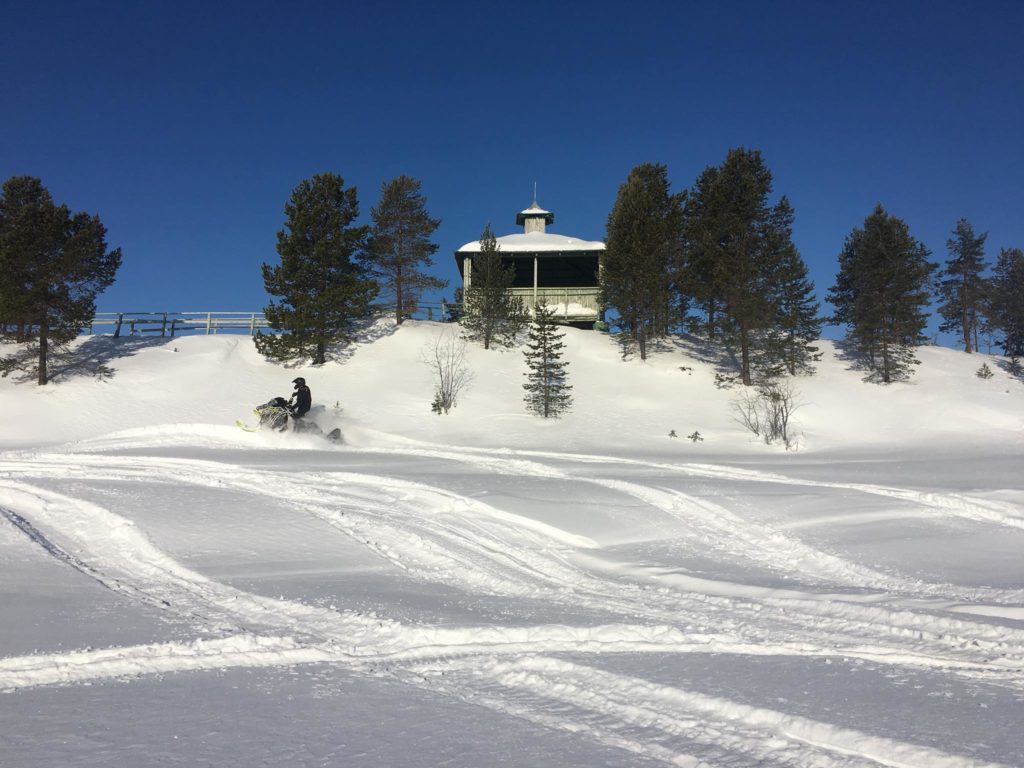
This year our trip to the north of Russia by snowmobiles, which has already become a traditional one, fell on the second half of March. Now we have to overcome a distance of about seven hundred kilometres long across the southern and central part of the Kola Peninsula. On the first day we set off from the campsite that is located on the banks of the Pirenga river and headed for the Khibiny mountains along snow-covered forest glades, crossing the endless expanse of lakes, which sparkled with dazzling white snow.
The weather was gorgeous! It was a little bit frosty, but sunny, the sky was clear and we were going through the deep snow drifts of recently fallen puffy snow. Just everything that a snowmobile traveller may dream of!
We reached a small fishing village situated at the mouth of the Rynda river (which flows into the Barents Sea) after midnight. One hundred and fifty kilometres across the snow-covered tundra, numerous lakes and unfrozen rivers took us an effort.
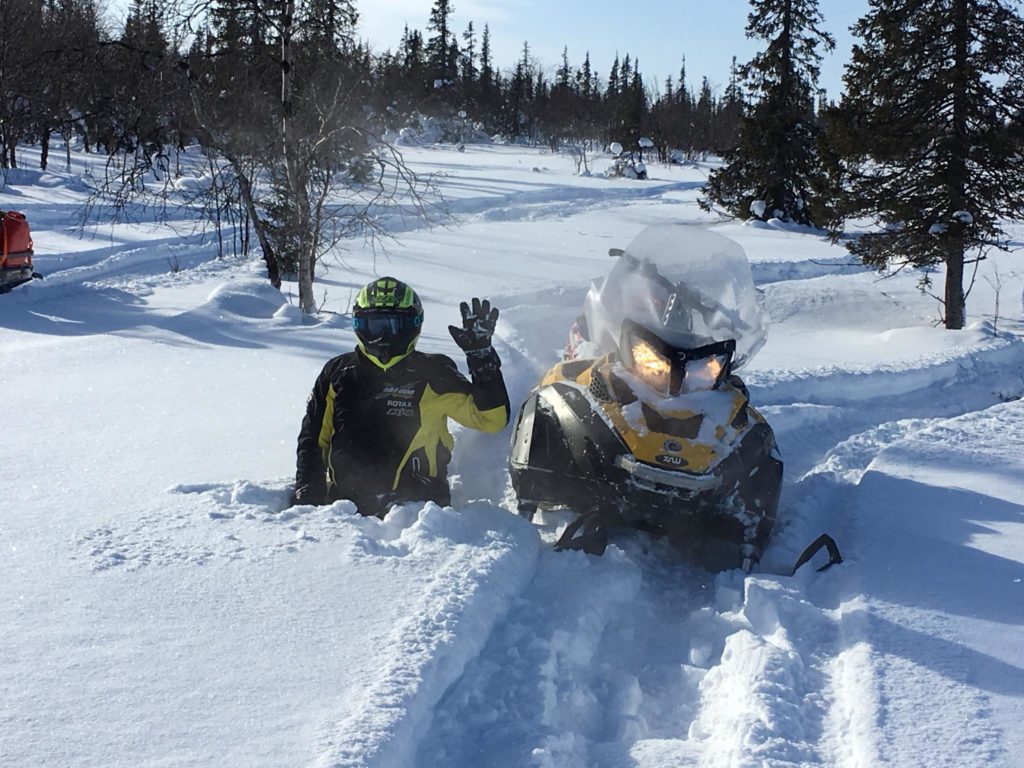
We were going without following any track but only knowing the coordinates of the finish point and the direction of our way. The last thirty kilometres turned out to be especially difficult. It was night and we could see huge ice caps, overhanging from the rocks. In addition, it was snowstorming. Sometimes I had a doubt that we would be able to get out without losses, especially when our two snowmobiles got stuck in a snow-ice porridge up to the seats, while we were crossing the river.
It was impossible to move the snowmobiles even when the five of us tried to push them. As a result of our attempt to do something, we fell into the cold water, got soaked through, and only by hooking a rope to another snowmobile, we managed to pull the equipment out of the ice captivity. Then we wandered for several more hours around the labyrinths of rocks, trying to find an escape from the gorge.

And our reward for all these trials became an extraordinary, indescribable and just an amazing sight: a real northern lights! Having turned off the engines and the headlights, we were watching this miracle of nature in complete silence for several minutes, being absolutely mesmerized!
Our two attempts to get out of the Rynda, taken before lunch, didn't make any success. The snowstorm was blowing and howling so that everything at a distance of ten metres became obscured by a snowy haze. Because of such visibility, the ride along the mountains turned into a Russian roulette game. Later in the tundra we met the fishermen on snowmobiles with sleds and luggage, which said that in recent years a lot of people had died under avalanches and because of falling from the steep cliffs there.
It is easier to go across the tundra, but there is another danger lurking: the rocks. These huge boulders resemble snowdrifts from afar, but hitting them at high speed threatens the most severe consequences both for the equipment and the driver.
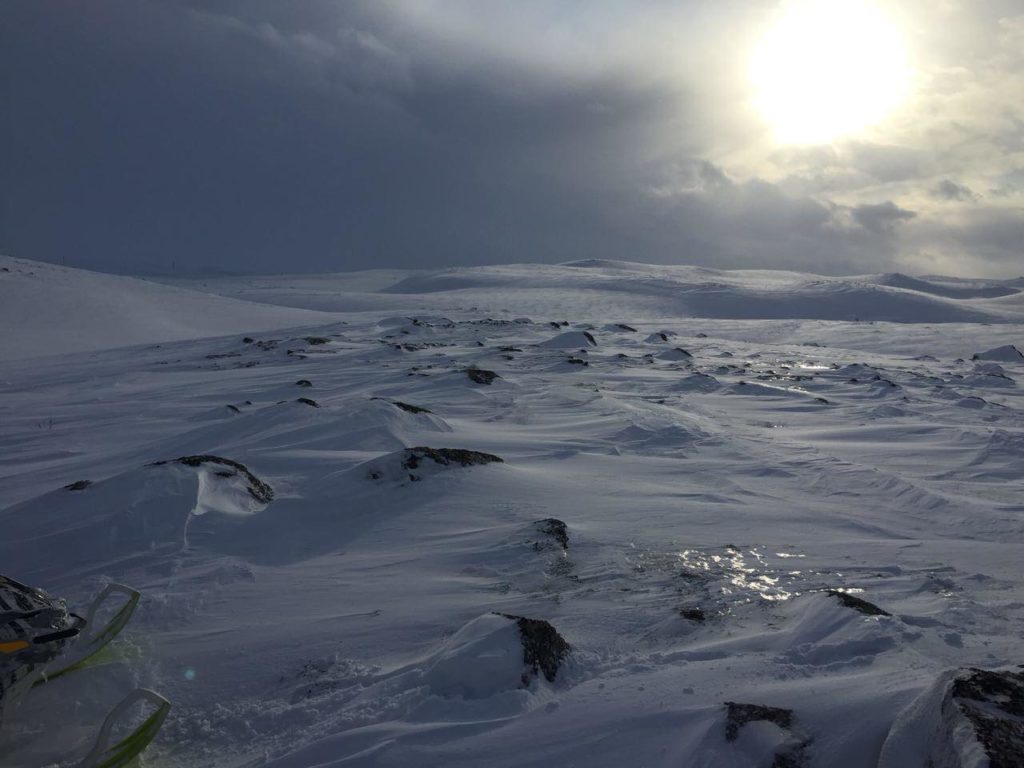
In winter it is more difficult for an unprepared person to survive in the tundra than in the desert. You can overcome dozens of kilometres without coming across a single tree. There is snow and stones only. Sometimes you can see small wooden houses. Those are the winter quarters, inside which you can find a stove, a hand-constructed bunk with a couple of reindeer skins, some matches, salt and sugar, a small supply of firewood and even some products: pasta, a bag of flour and canned foods. As a rule, their doors are propped up with a crowbar, so you can come in and warm up indoors if you are completely frozen or being caught in a snowstorm. The locals move from one winter quarters to another, when they have to cross tens and hundreds of kilometres.
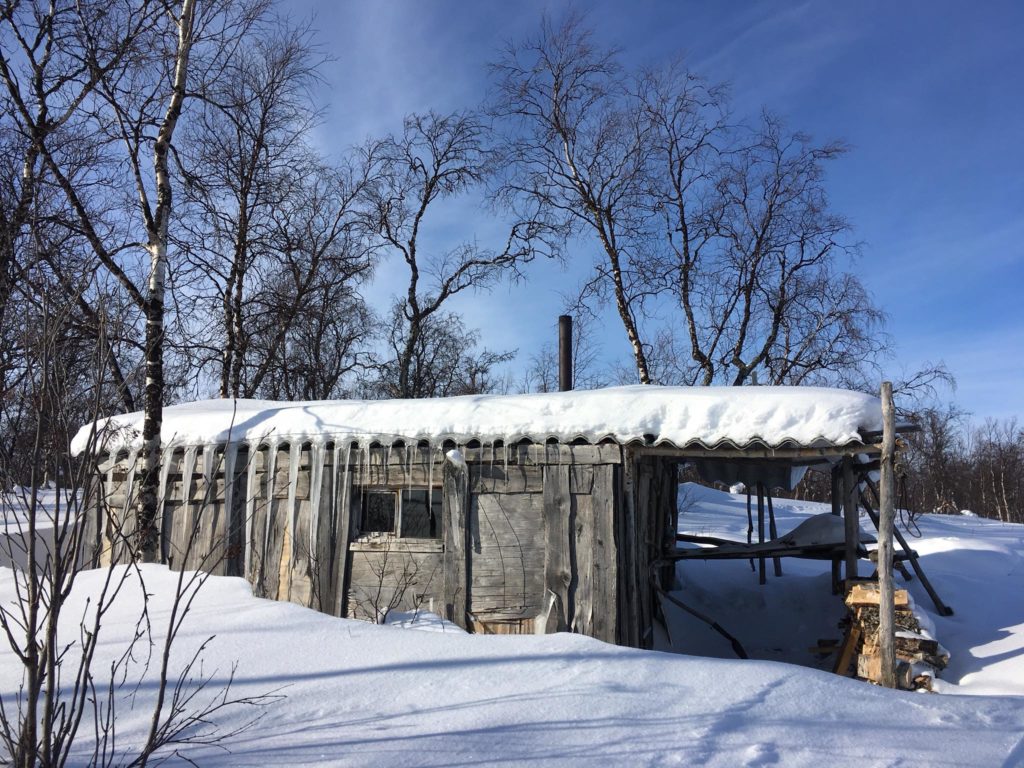
We stopped halfway in a fairly large Tumanny settlement. Again we saw the sight, which had already become a common one: the abandoned five-storey buildings without windows and doors in the snow-covered streets and cars left under the snowdrifts.
We arrived at the finish point of that day, the village named Teriberka, quite late at night.
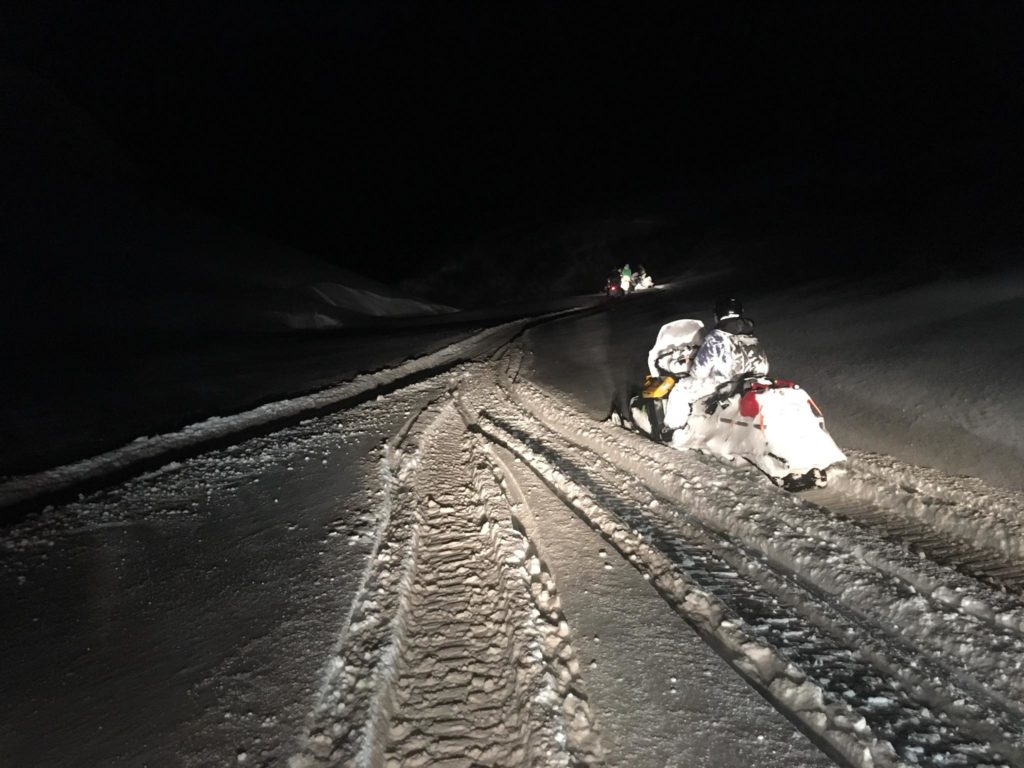 Having overcome more than one and a half hundred kilometres across the tundra, ice-covered rivers, lakes and mountain ranges, we reached the coast of the Arctic Ocean at midnight. The goal of our expedition has been achieved!
Having overcome more than one and a half hundred kilometres across the tundra, ice-covered rivers, lakes and mountain ranges, we reached the coast of the Arctic Ocean at midnight. The goal of our expedition has been achieved!
Teriberka is an old settlement located on the banks of the river of the same name, which flows into the Barents Sea and has been known since the 16th century. The settlement is situated along the bay and consists of two parts. The "old" Teriberka presents the log and plank houses (that have been leaning from time to time, covered with snow up to the roofs), fallen fences and half-rotted fishing boats lying on their sides between squalid buildings.
In another part of the village you can see several shabby five-storey buildings (some of which are also abandoned), a shop, a church and a pier where the small ships are docked. About one thousand people live here.
The distance from Murmansk to Teriberka can be overcome by car following the road, however, in winter it is often closed, since snowdrifts can reach the figure of two metres high. In recent years, Teriberka has become a popular destination for fishermen, divers and other lovers of extreme sports. There are campsites, where you can find yourself in quite decent conditions and admire the rocks and sandy beach, which is washed by rolling one after another waves of the never-freezing but at the same time very harsh Barents Sea, from the window.
AN EPILOGUE by the KareliaOk company, which has organised the expedition:
Let's breathe out slowly and recall everything that happened to us and our incomparable Team of travellers and adventurers. The videos and notes that we shared will describe what we experienced day by the day. And we can share our overall impressions and results.
Initial data
Our Team (it must be written with a capital letter) are amazing people who have travelled around half of the world and are hardened by difficult journeys.
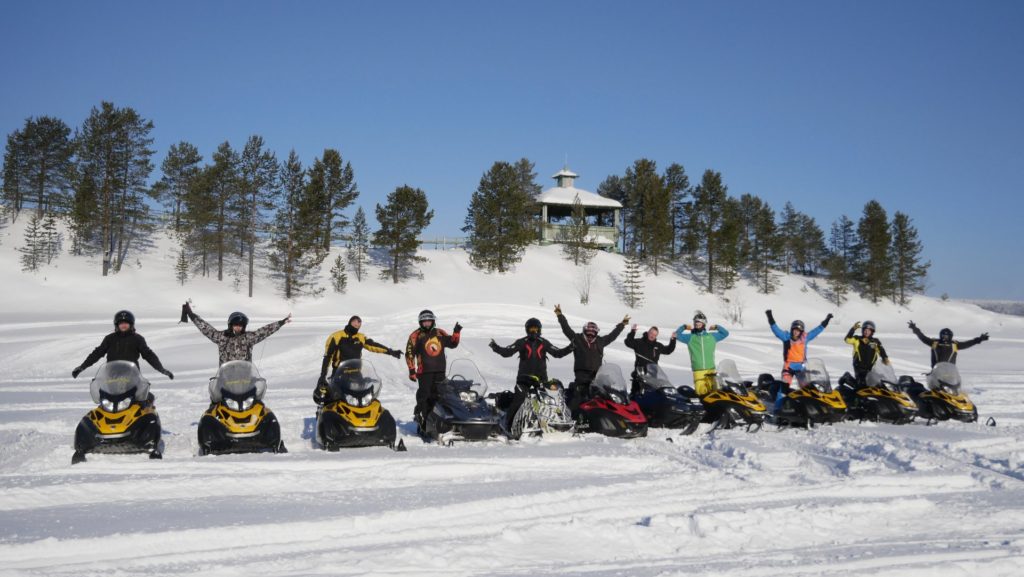
The route is logical and beautiful. It is paved through forests, mountains, the tundra, lakes and includes overnight stays in comfortable conditions and meals of ethically traditional cuisine. The route starts from the Pyrenga and ends in the hero-city, Murmansk. The length of it is 675 km (give or take a dozen) and the duration is 5 days. The daily courses are not that hard.
Support: Our permanent leader Andrew and instructor Ivan participated as the technical support.
Our expectations
Speaking of the Russian Far North, we were going to admire the mountains, rush across the tundra, overcome the lakes as quickly as the wind, watch the Northern Lights, enjoy the views of the Arctic ocean, taste delicious food, sleep well and return home being absolutely happy with the journey.
The real result
We expected one outcome, but in reality our fabulous dreams of a pleasant (almost resort) snow ride were covered with the skin of a very fat polar fox. The name of this unpredictability is the North Weather.

For some reason, the North Weather decided that we did the wrong thing, when invaded in her snowy expanse, therefore, it howled wildly and brought about 10 times more monthly figures of wind, snow and ferocity on us at once. This way a wonderful journey was turned into a rather extreme adventure.
We could see nothing at a distance further than the headlights of our snowmobiles. The snowdrifts were deep, about the height of two travellers like us. At this point we could have finished this story, waved our hands, returned home and waited there till this March attack of hysteria would have passed with time… But there was no way to go back and it was impossible to make a stop, so we continued on our way.

Our decision is to go forward up to the place of the overnight stay. It may seem to be very difficult, but we did it, though we were on the verge of giving it up. And we kept on the next day too. And 3 more days passed in the same way. During the breaks our snowmobilers, slightly dazed from adrenaline charge, managed to find the strength to swim in the Barents Sea or to have some chill talks in the hospitable, warm and comfortable houses. By the way, we were always welcomed in a friendly way (with a bread and salt-fish-shrimp-deer) and the locals almost never considered us to be crazy (maybe they already got used to the travellers like us?).
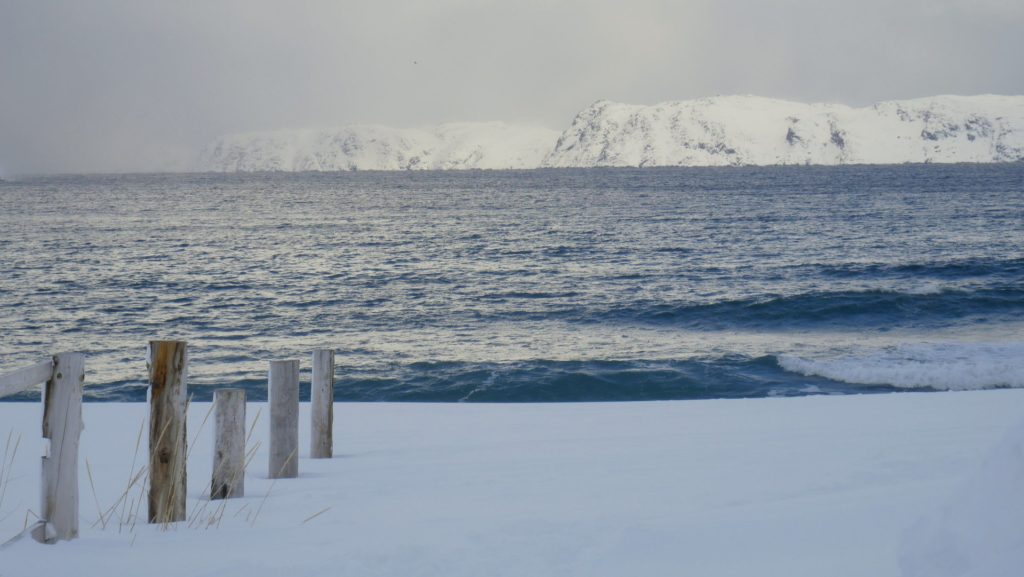
And among all the things, of course, we saw the northern lights and were impressed by the North, the locals' lifestyle and the beauty of the surroundings. We also watched the sea, climbed the mountains, met wonderful people, ate delicious food and slept soundly. So, technically, our plan has been fulfilled. Of course, we should work on some things and correct some mistakes, but that's why the expeditions are called that way.
The Team has coped with the challenge. EVERYONE has overcome it! Not a single participant was injured either physically or mentally. That was the equipment, which was close to breaking down, but definitely not these Men.
We got a lot of impressions: they are partially chilling; most of them are indescribable and a little are unprintable. But the most important thing is that they are truly UNFORGETTABLE!
Thank you for your persistence, teamwork, determination and fortitude! It was worth it.
 Cap-travel.ru
Cap-travel.ru